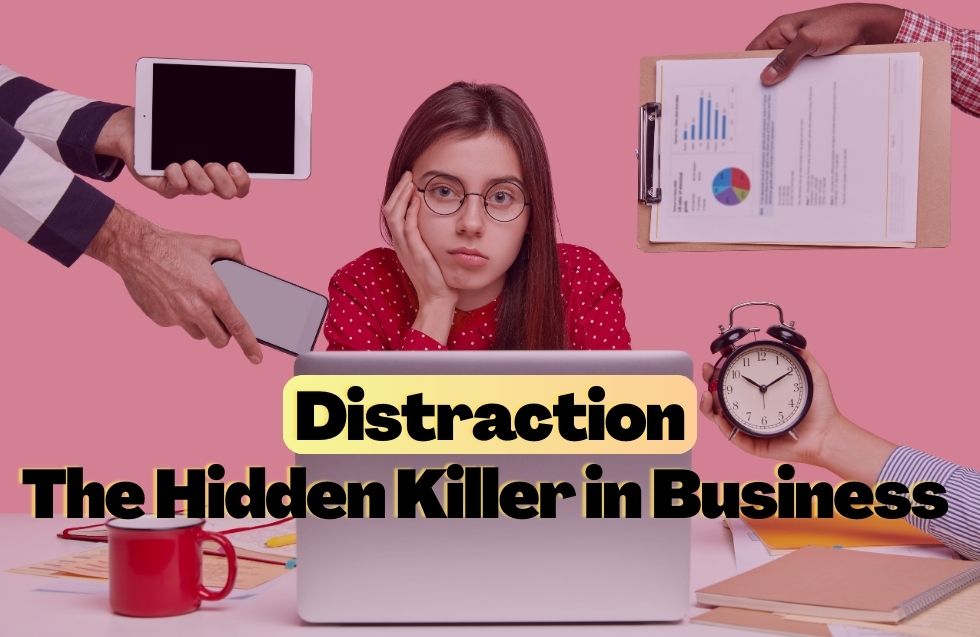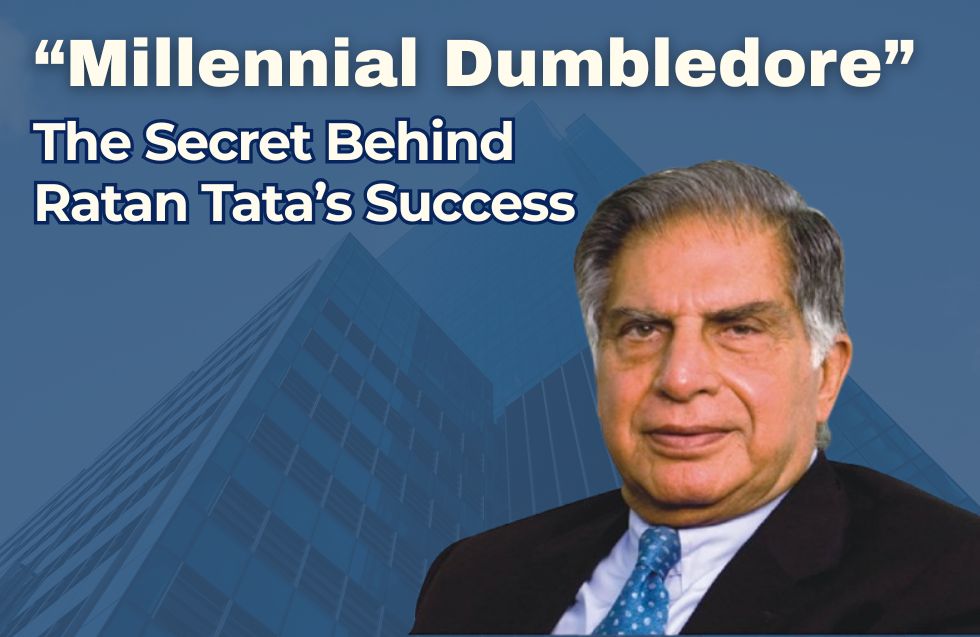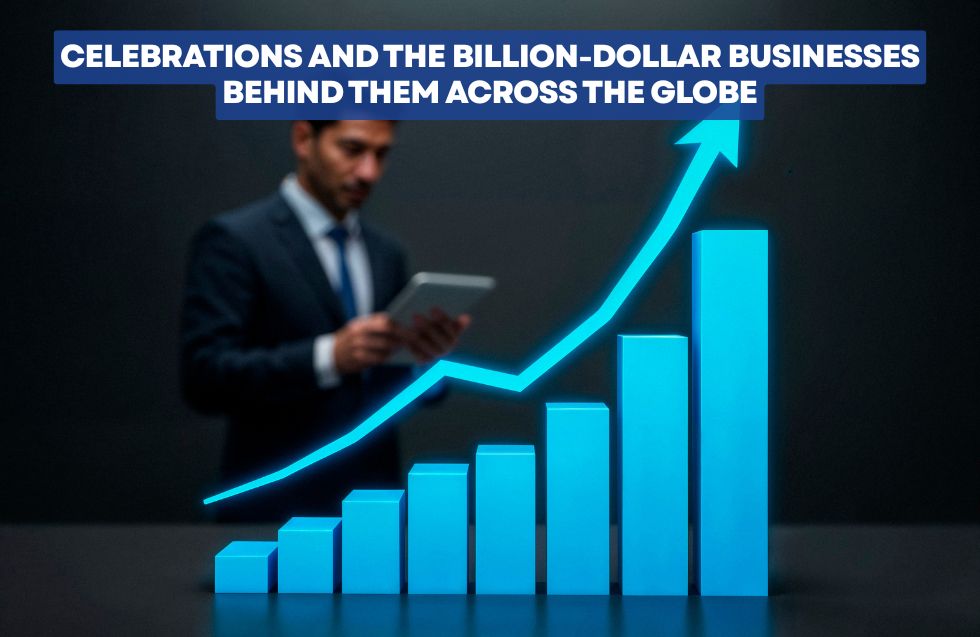Introduction: The Silent Trillion-Dollar Drain
Each business leader fears competition, increasing expenses or a changing marketplace. Yet the actual killer of productivity is staring us in the face- distractions. In 2025, research indicates the average worker loses more than 6 hours each week to interruptions. That adds up to $650 billion annually in the U.S. alone and more than $1 trillion globally.
And the bigger problem? It’s not financial, it’s the energy suck. Distractions leave individuals feeling stressed, worn out and disconnected. For businessmen and women, that leads to slower growth, decreased performance and missed opportunity.
The better news? If distractions are sucking the life out of business productivity, attention is the antidote.
Distraction: The Hidden Killer in Business
Distractions are not slight disruptions. They draw attention away, suck mental energy out and subtly erode performance. Distractions come with an often invisible cost every time a leader or an employee becomes distracted:
- Cognitive overload: Ongoing task-switching taxes the brain in a way where it fatigues far earlier.
- Decision fatigue: A stalled focus leads to poor decisions.
- Burnout spiral: Perpetual distractions maintain high tension and low motivation.
For business owners, it multiplies in cost. A distracted leader invites a muddled vision, squandered resources and lost opportunities for expansion. This is why distractions are sucking the life out of business productivity at both the organizational and individual levels.
The Energy Drain and the Burnout Cycle
- Focus: The Strategy of Success
The antidote to distraction is focus. In today’s noisy, fast-moving economy, concentration is no longer optional, it’s a competitive advantage. When leaders and teams focus on one task at a time:
- Work gets done faster and better.
- Stress goes down because people aren’t juggling ten things at once.
As companies strive to move their organizations forward with intention instead of spinning circles, let’s be reminded by Productivity Gurus:
Success is not about how much you can complete at one time, it’s about the right amount of focused intention, down to 1!
- The Power of One
The power of one never fades:
- One Clear Focus → Companies with a single, sharp strategy outperform competitors by 30%.
- One Task at a Time → Teams completing one task before moving on report higher quality work with less stress.
- One Deep Work Block → A single 90-min block of focus often equals 3- 4 hours of multitasking output.
Executives who harness the power of one gain momentum, simplicity and direction. Those who don’t are likely to get caught in the busyness trap of working harder, but not smarter.
The Financial Toll of Distraction
Let’s put the figures into perspective.
- A single employee, working for $50,000 a year, who loses only two hours a day to distractions wastes $13,000 per year.
- For 1,000 employees, that amounts to the company losing $13 million a year.
Globally, distractions are siphoning off business productivity by over $1 trillion every year. It’s not a “soft cost.” It’s an explicit drain on profitability, growth and innovation.
What’s Behind the Drain in 2025
Distraction is not improving, it’s worsening due to:
- Always-on culture: Slack, Teams and email never quit humming.
- Remote & hybrid work: Work life and home life mix together.
- Psychological pressure: Pressure of being “always on.”
- Tool overload: Too many apps and platforms generating digital noise.
The result: distractions are draining business productivity in ways that feel structural, not random.
Strategies to Take Back Focus On What’s Working in 2025
Join the Digital Silence Movement!
The companies are implementing new strategies to counter distractions that are draining business productivity and empower employees.
Key Strategies and Tools for Employee Focus
| Strategy / Tool | How Does It Help Employees |
| Digital Silence Times | Official blocks to pause messaging, notifications and alerts so that employees can focus deeply. |
| Time Blocking & Deep Work | Focused work periods using methods like the Pomodoro Technique for 25-50 minutes which reduces context switching. |
| AI-Powered Cognitive Tools | Tools like AdaptAI support productivity, mental health and focus analyzing performance and suggesting breaks. |
| Quiet Computing & Design | Soundproofed rooms, focus pods and noise reduction in workspaces help employees sustain attention. |
| Notification Rationale | Limiting alerts to only critical issues and consolidating communication channels reduces unnecessary noise. |
The Future of Work: Attention as Currency
By 2030, the thriving companies won’t simply control people’s time, they’ll control their attention.
- AI as attention managers: Devices that buffer communications according to workload.
- Cognitive fitness programs: Developing employees to build resilience in focus.
- Smart workspaces: Offices and remote stations that dynamically adapt to reduce distractions.
- The attention economy: The rarest resource will be focus, not information.
The future is for organizations that turn focus into a strategy, not an individual habit.
The Role of Leadership in Creating a Focus Culture
Leaders set the tone and policy. To keep distractions from eroding business productivity, Leadership must:
- Establish communication boundaries (no unnecessary messages after business hours).
- Implement focus-first policies such as “no-meeting mornings.”
- Regularly audit tools to eliminate digital clutter.
- Set the example by demonstrating focus rather than busyness.
When attention matters to leaders, the entire culture changes.
FAQs about Distractions in 2025
1. Why are distractions referred to as the deadliest business issue?
Because distractions suck away time, energy and attention resulting in burnout, bad decisions and billions lost.
2. How much is lost annually through productivity?
Employees lose roughly 13 full days each year to distraction. Worldwide distractions are costing business productivity more than $1 trillion.
3. Can AI fix the distraction issue?
Yes, if used judiciously. AI can eliminate noise and suggest optimal times for deep work or rest.
4. Why does concentration promise business success?
Because depth, quality and clarity result from concentrating on one task not from multitasking.
5. What is the “power of one” in business?
It’s the law that one vision, one priority or one task concentrated at a time yields the optimal results. The power of one always succeeds.
6. What value of distractions are draining business productivity will pay in 2025?
It’s estimated that distractions will cost over $650 billion in the U.S., and $1 trillion worldwide with most of the costs attributed to loss of focus and burnout.
7. What is the relationship between distraction and burnout?
Task-switching and overload drain mental energy, which directly leads to burnout.
8. What is the power of one in business productivity?
Only working on a single task, one goal or one strategy consistently produces more results.
Conclusion: From trillion-dollar problems to trillion-dollar opportunity
The fact is undeniable distractions are draining business productivity on a colossal scale. But the solution is at hand. By adopting single-minded focus, leaders can convert distraction to discipline, burnout to balance and chaos to clarity. What is presently a trillion-dollar drain can be converted into a trillion-dollar opportunity for those who are willing to protect attention and make focus their greatest competitive advantage.
The question is: will your organization spearhead the focus revolution or get lost in the noise?
Also read: “People-Centric, Not People-Dependent: The Hidden Formula Behind Every Successful Business”












